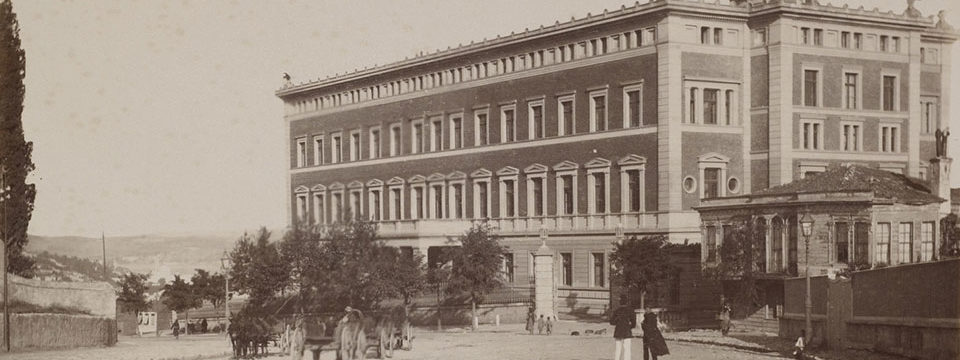The Building of the German Consulate in Istanbul
The German Embassy in Ottoman Empire
Preparation of inventory and condition survey and development of a rough concept for the former German Embassy in Ottoman Empire period (today’s German Consulate and German Archaeological Institute in Istanbul)
The building in Istanbul is the first embassy to be built after the foundation of the German Empire in 1871. The Imperial Government in Berlin commissioned Hubert Goebbels with the planning and execution in 1871 and approved costs of 1.1 million marks. His design was based both on various existing mission buildings of other countries, such as the French or English embassy and on contemporary Prussian representative architecture, such as the Old Palais Unter den Linden 9 in Berlin (formerly: Kaiser-Wilhelm-Palais). The construction work began on 21 April 1874. After the foundation and basement were completed, Architect Goebbels died unexpectedly on 28 September 1874. Albert Kortüm was appointed as his successor on 10 November 1874. The building, with almost 10,000 m² and six storeys, was finally completed under his management for a total sum of 2.2 million marks within three and a half years and was inaugurated on 1 December 1877 by Prince Heinrich VII Reuß and his wife.
From November 2018 to December 2019, Jörg Breitenfeldt – Büro für Restaurierung was entrusted with the preparation of inventory and condition survey for the preservation of the monument and the development of a rough concept for the main building and the garden. Within the scope of this project, a comprehensive inventory and condition survey with photo documentation, room book as well as clarification of the monument value of the individual parts of the building was carried out and documented. Based on this, the necessary and foreseeable measures were assessed in terms of monument preservation, including evaluation and analysis of already existing expert opinions. With the final preparation of a rough concept for the conservation of the historical monument and recommendations for further procedures on-site, a basis for future planning has been created.
Client
Federal Republic of Germany represented by the Federal Ministry of the Interior, for Building and Homeland Affairs and this represented by the Federal Office for Building and Regional Planning Bonn (Bundesamt für Bauwesen und Raumordnung BBR)
Realization
November 2018 to December 2019

